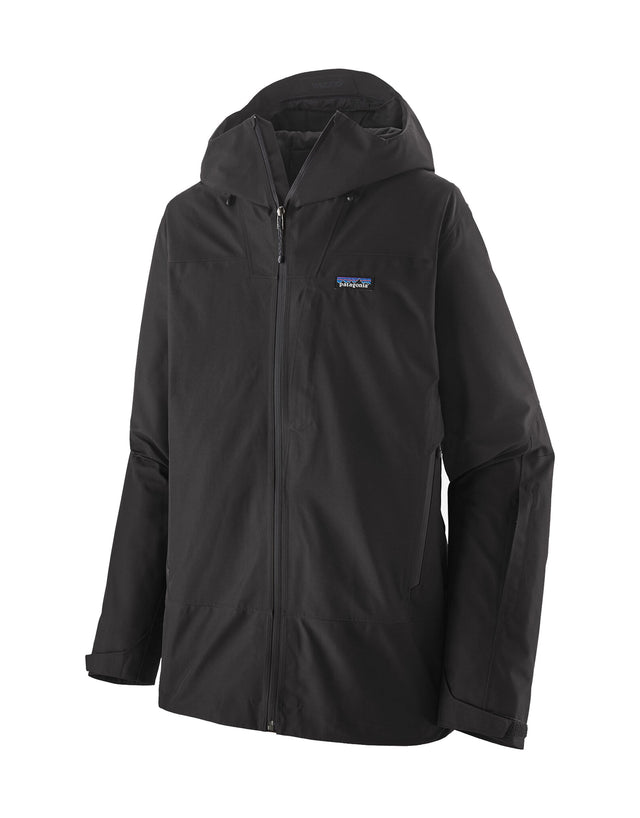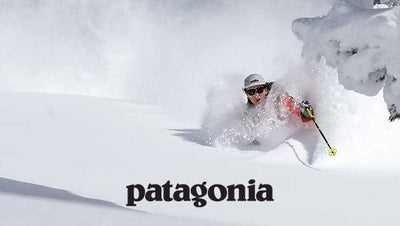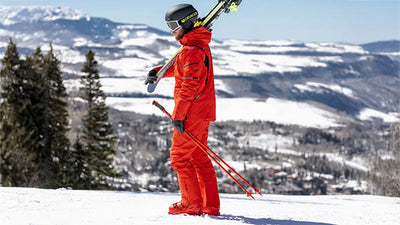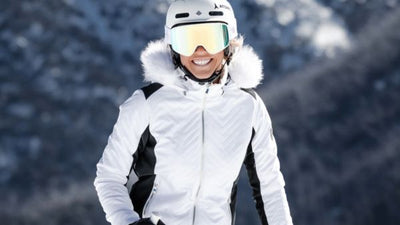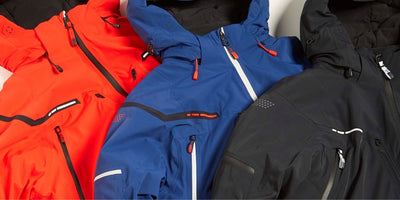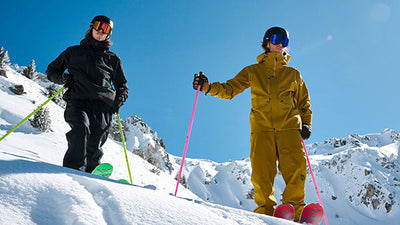Patagonia Storm Shift Gore Tex Ski Jacket
Patagonia Storm Shift Gore Tex Ski Jacket - Medium / Black is backordered and will ship as soon as it is back in stock.
Couldn't load pickup availability
Fast FREE Shipping
Fast FREE Shipping
- Fast & Free shipping is available with no minimum spend.
- Order by Midday for same business day shipping dispatch (excluding skis requiring mounting)
- Express Post available on non-bulky items, select at checkout.
- Full Shipping details and delivery estimates can be found on our Shipping Page.
- Certain Busy times (Black Friday, Christmas etc.) will see shipping times lengthen, please allow extra time.
30 Day Returns
30 Day Returns
We offer 30 day returns on non-Clearance items. Full T&C and link to our Return Portal on our Returns Page
Expert Advice
Expert Advice
We are avid skiers, and use as much of our gear as we can.
We review our skis on our YouTube Channel & you can always Contact Us for expert product advice.
| Mens Jackets | |||
|---|---|---|---|
| Size (in) | Chest | Waist | Sleeve |
| X Small | 34-35 | 28 | 32 |
| Small | 35-37 | 29-30 | 33 |
| Medium | 38-40 | 31-33 | 34 |
| Large | 42-44 | 34-36 | 35 |
| X Large | 46-48 | 38-40 | 36 |
Description
Description
The waterproof, windproof Storm Shift Jacket is made of fully PFC-free GORE-TEX material—that means the fabric, membrane and DWR finish do not contain perfluorinated chemicals.
A unique liner is warm and wicks moisture to provide lasting storm protection and comfort for skiers and boarders getting out in all types of conditions. With a refined fit, clean styling and technical features, the Storm Shift Jacket is built to complement a rider's natural movement. Fair Trade Certified™ sewn.
- Tough, 2-layer 100% recycled polyester PFC-free GORE-TEX fabric for durable waterproof/breathable and windproof protection contains no perfluorinated chemicals in the fabric, membrane and DWR; body-mapped tricot-knit lining textured in a zigzag pattern wicks moisture and dries quickly
- Helmet-compatible, two-way-adjustable hood with laminated visor for optimal visibility in bad conditions; tall collar protects neck and face, even with hood down
- Drawcord on hem exits into handwarmer pockets for easy adjustment
- Watertight, coated zippers; pit zips quickly release heat; low-profile cuffs secure over or under gloves
- Adjustable powder gasket can be cinched for a tight seal or lies flat when not in use; webbing loop at center back connects to any Patagonia® Snow pants
- Two zippered handwarmer pockets; secure media pocket with cable routing on chest; zippered forearm pocket; interior zippered pocket with key clip; interior drop-in pocket
- Concealed RECCO® reflector
- 817 g
Specifications
Specifications
-
Warmth:
Shell
Shell
-
Waterproofing:
GORE-TEX
GORE-TEX
-
Breathability:
High
High
-
Membrane:
Gore-Tex
Gore-Tex
Outerwear – Buyers Guide
Outerwear – Buyers Guide
Your outerwear is your first point of defence for keeping the weather out. The quality of your outerwear is often a key point in your enjoyment of a bad weather day on the hill. This guide is aimed at providing you with the tips and info you need to make buying the right gear simple.
Waterproof and Breathability Ratings
The Waterproof and Breathability ratings are a good place to start when it comes to picking out a Ski Jacket or Pants. In general, higher ratings will perform better in adverse conditions, although these ratings aren’t the only important factor.
Waterproofing
Waterproof Ratings are measured in mm’s of height using a water column. They range from 2,000mm (2k) up to 40,000mm (40k), with most options sitting at 10k, 15k, or 20k. Gore-Tex is accepted to be rated at 28k waterproofing and is the gold standard for staying dry.
| Rating (mm) | Description | Suitable Conditions |
|---|---|---|
| 0 - 10,000 | Low waterproofing ratings, rain and snow proof in some conditions | Sunny, Cold Snow |
| 10,000 - 15,000 | Medium waterproofing ratings, rain and snow proof for most conditions | Sunny, Cold Snow, Light Rain |
| 15,000 - 20,000 | High waterproofing ratings, rain and snow proof for all but the worst conditions | Sunny, Cold or Wet Snow, Medium Rain |
| 20,000+ | Highest waterproofing ratings, rain and snow proof for all conditions | All conditions |
If you go out when its raining and expect to stay dry, you don’t want to be looking at anything less than 20k Waterproofing. Lower-ratings work well for the occasional shower or snowing, but will wet out quicker than their higher rated cousins.
Breathability
Breathability is a measure of how well a water vapour disperses from inside the outerwear. It is measured in grams per 24hr period, and ranges from 2,000g (2k) up to above 30,000g (30k). Breathability becomes more important the more active you are when wearing it.
| Rating (g) | Description | Suitable Users |
|---|---|---|
| 0 - 10,000 | Low breathability ratings | Resort |
| 10,000 - 15,000 | Medium breathability ratings | Resort |
| 15,000 - 20,000 | High breathability ratings | Backcountry, Resort |
| 20,000+ | Highest breathability ratings | Backcountry, Resort |
If you regularly chuck your skis on your shoulder and hike for a better run, a higher breathability rating is essential. Anything 10k or less you will find that you sweat more often while skiing and the moisture inside your layers will be more uncomfortable.
Breathability is only as good as the layers you wear. If you are stacking cotton t-shirts and hoodies under your jacket, breathability performance will be severely compromised. Layering is key!
Waterproof & Breathability is only the start. Most brands are likely to add higher quality features in a higher quality garment. Hence you will find better seam sealing, DWR finishes and zippers on pieces with higher waterproof ratings. These smaller details play a huge role in comfort & performance.
Read More Here
Outerwear - Cleaning & Care Guide
Outerwear - Cleaning & Care Guide
There are many misconceptions out there about cleaning Ski Jackets & Pants. Fundamentally, in order to keep working its best, they need to be washed and re-waterproofed on a regular basis. Gore Tex, or any other membrane requires the outer fabric to bead the water in order to maximise waterproofness & have any semblance of Breathability.
Over time, the pores in your outerwear's membrane get filled with dirt, oil & other various grime. This inhibits the garments ability to breathe and wears down the DWR coating, ultimately leading to reduced waterproofing performance.
Outerwear Cleaning Steps
The process for cleaning your outerwear is pretty simple. Zip it all up, then Machine or Hand Wash following the instructions of the detergent and garment.
A specialised 'Tech Wash' detergent is important to ensure you don't degrade the DWR or damage the membrane on your Outerwear. We have had great luck with Nikwax products over the years and strongly recommend their water based solutions.
If no instructions are present on your garment, its generally safe to us a warm wash, with a rinse cycle or two, and minimal spin. Avoid the use of any fabric softeners, bleach or stain removers.
After washing, a medium heat tumble dry will help to re-activate the DWR. You can also line dry and re-activate the DWR coating with an iron on medium heat, no steam with a small towel between iron face and garment to prevent burning.
Re-Waterproofing
If water still isn’t beading off your garment after following the above steps, your DWR coating may be worn through. DWR Coatings are advertised to last for up to 20 launderings, but in reality, we rarely find that is the case. Good news is that re-applying a DWR coating is fairly easy.
There are two kinds of DWR application. 'Spray on' DWR are good for insulated pieces or anything with a lining. 'Wash In' DWR is only good for 3L shell pieces. If you are unsure, Spray is the way to go.
The Outerwear needs to be wet to absorb the Proofer, so if it has fully dried after washing, re-soak it with water. Then apply the proofer that suits the garment.
How Often Should you Clean your Outerwear?
It depends. The DWR Coating will be the first noticeable failure and sign that your outerwear needs some love. When water stops beading off the surface and water begins to absorb into the fabric it is definitely time for a wash.
This rarely happens more than once a season, unless you are out in the elements every day. If you are a recreational skier, a great habit is to wash and care for your gear before putting it into storage for summer so that its ready to go for the next season.
If you ski back to back winters and put a lot of days in. We recommend to do a full care in Spring and a touch up once in Autumn when you get back from Overseas.

